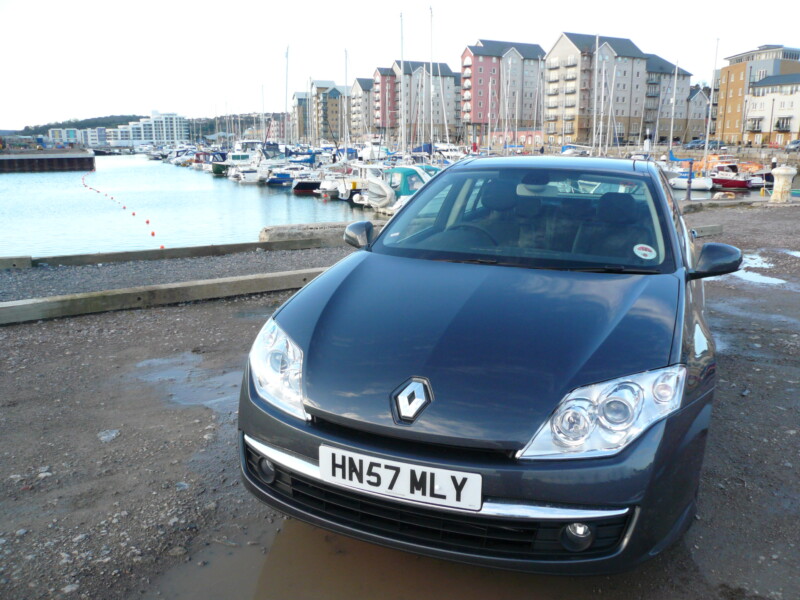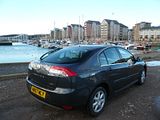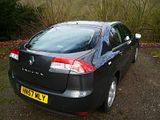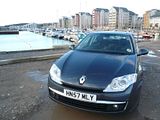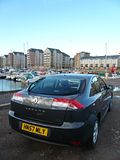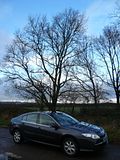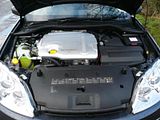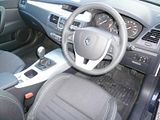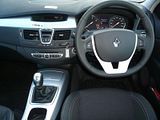Whilst much of Europe has long favoured small cars, with market best sellers being the likes of the Renault Clio or R5 before it in France and Spain and the Fiat Punto and Panda in Italy, in the UK, the large family car has always done well. Think back to the 1970s when Ford’s Cortina regularly captured more than 10% of the total UK car market, year after year. That was partly a consequence, of course, of a buoyant company car market and the fact that hard-nosed fleet managers tended to have a very strict “Buy British” policy, often giving the driver choice on little more than the colour of their new car. Those restrictions eased in the 80s not least as the definition of what was genuinely British proved to be something of a movable feast, and whilst the Ford Sierra did not sell in anything like the quantities of its predecessor, the D -Segment as it is sometimes called, remained commercially very significant. Indeed, at a European level, it peaked at 3.4m sales in 1998, meaning that every volume car manufacturer made sure they had an offering. The sector has seen quite a decline since then, with buyers being tempted by a mix of premium badged cars, crossovers or in some cases going down a size segment. Nevertheless, it is still expected that this market sector will still amount to nearly one million cars in 2007. So even getting a few percentage points of that is good business. That must have been the thinking at Renault, who declared a sales ambition of 9 percent of this sector for their new third generation Laguna. Bearing in mind that the car uses a platform that will also underpin many other Renault-Nissan products, notably the next Primera, as well as the Nissan Altima in the US, then if Renault can sell that number of cars the new Laguna should meet Carlos Ghosn’s demand that every car must be profitable. Whilst the French will doubtless buy it simply because it is French – though it does face competition in that regard from the rather ungainly Citroen C5 and Peugeot 407 – cracking the rest of Europe may prove a little harder. The second generation Laguna never quite captured public interest like its predecessor and it also built up a reputation for reliability issues, mostly electrical and electronic, so the third generation car has quite a mountain to climb. As part of the UK launch activities, in recognition of the importance of company car user-choosers, Renault decided that they would make a Laguna available for free for a long weekend to company car drivers, with a scheme that they organised through Avis. With proof that you are a current company car driver, all you had to do was to select a date and collection location, and a Laguna of some sort was guaranteed. I lost no time in signing up, and was able to get a car from Friday afternoon to Monday morning to test out.
The majority of Laguna sales are likely to be of diesel powered cars, so these have received all the focus at launch. There are three engine outputs from two different units. The 110 bhp cars use the 1.5 DCi engine that is already familiar from the Megane and Scenic, whilst the 130 and 150 bhp cars have a larger 2.0 litre unit. Petrol powered models will follow. The car that Avid made available to me was the middle power output, the 130 bhp 2.0 litre unit. This is a good representation of the state of diesel engines. It still sounds quite noisy when you start it up, though nothing like as bad as diesel cars used to do even 5 years ago, but once warm, the diesel noise is pretty well suppressed and the car proves quiet and refined once underway. The key to this car is the torque of which there is plenty, so there is strong acceleration once the revs reach 1500rpm, but below this, the car feels somewhat languid. Above this, though, and there is quite a strong punch which made me wonder whether it would really be worth spending the extra for the more powerful 150 bhp car. There is a six speed gearbox and the gearchange is quite positive. Whilst the Laguna proved pleasant enough to drive, the enthusiast will be better served by a Mondeo or a Mazda6. The steering is light and does not have that much feel, but it does allow the car to be manoeuvred quite easily and in fact the handling holds few surprises, with a tendency to understeer only when you get quite enthusiastic on the curves. There seemed to be plenty of grip and body roll is kept well in check. The ride proved to be something of a mixed bag, as it was quite soft and compliant at times, but there were also surfaces where it was easily caught out and proved quite harsh. The brakes gave no cause for concern. Sadly, there is a confounded electronic handbrake here, and although it generally disengaged when moving off, these devices do challenge you when doing hill starts or trying to park when on less than flat ground. Visibility is about as good, or poor as you get these days. The sloping rear window means you have to guess where the back of the car is when reversing, but on the move, the door mirrors provide a decent field of view, though the thick C pillars do mean care is needed at oblique junctions. Being a Renault, safety kit is generous. There are six airbags as standard and a new rear thorax airbag is an option for £250. ABS with EBD, Brake Assist (which primes the brakes when you come off the accelerator) are standard across the range as is ESP with ASR traction control on all but the 1.5 dCi. The Mk2 Laguna was the first car to receive a five-star NCAP safety rating and this car continues that focus on safety matters.
Renault have made a huge effort to increase the quality of the interior of this Laguna compared to its predecessor, and the results are generally quite impressive. Fit and finish is good and there are lots of soft touch plastics. There is a large inlay on the passenger side of the dash and surrounding the centre console which is silver in colour and although no-one would ever believe this to be anything other than plastic, it does look better than similar inlays in other brands. There is a nice leather wrapped steering wheel which proved good to hold. The instruments are confined to two large dials for speedometer and rev counter with two smaller ones for fuel level and water temperature set between them in the lower half of the cluster, leaving space above them for trip computer display data. Twin column stalks for indicators and wipers had a precise quality feel to them. There are audio repeaters and trip display buttons on the wheel. The centre of the dash has a display area for the audio system mounted high, and then lower down in between the central air vents are some simple buttons for the climate control. A bank of buttons below this are used to operate the audio system. There is a slot in the centre of the dash for the card key style “ key” with an engine start button to the left of the wheel. It is a simple design, nicely uncluttered and easy to use.
Renault has long enjoyed a reputation for providing soft and welcoming seating which is supremely comfortable and the Laguna continues that tradition. The sports-style seats have a pleasant enough cloth covering in the centre with leather outers and are manually adjustable, with a height adjuster proving useful to ensure I could sit low enough. The steering column adjust up/down as well as in/out so getting the right driving position was easy and once there, I felt at ease with how I was sitting. Space, we’re told, has been improved slightly over the old model (with which it shares its basic underpinnings) but it’s not quite up to the stellar standards set by the VW Passat or Ford Mondeo, partly because they both grew physically in their latest incarnations. Space in the back is also good, with sufficient legroom even if the front seats are set well back, though some rivals, such as the Ford, do have more space on offer. The centre console unit does come a fair way back and there is a bit of a central tunnel, but even so, a middle seat occupant should be able to sit here quite happily. Headroom is sufficient. There are map pockets on the back of the front seats as well as pockets on the doors for odds and ends. The boot is a good size, notably long from front to back, though at 450 litres with the rear seats up, it is notably smaller than that of the Mondeo. It is a squared off shape, with the little bit behind the wheel arches having a net to the rear of the car so you could tuck small items in here without them rolling around all over the floor. The rear seat backrests are asymmetrically split and when lowered there is a long and flat load bay right up to the front seats. Inside the cabin there is a decent sized glovebox, pockets on the doors and a useful cubby under the central armrest.
The Laguna comes in four trim levels: Expression, Dynamique, Dynamique S and Initiale. Standard kit includes keyless entry, a CD radio, ABS with EBD, air-con, 16-inch alloys and ESP. The Dynamique gets chrome detailing, part-leather sports seats, cruise control, and front fog lamps, to which the Dynamique S adds 17-inch alloys, electrically adjustable and heated leather and alcantara sports seats, aluminium flashes on the dash, an automatic parking brake, automatic lights and wipers and climate control. If you really want to stand out in the company car park, the range-topping Initiale comes with pale wood trim, beige leather upholstery, integrated rear sunblinds, parking sensors, swivelling xenon headlights, Bluetooth and colour sat-nav. Along with the standard 138bhp 2.0-litre petrol, there’s a turbocharged 168bhp model, only available with a six-speed auto gearbox. As before, expect the diesels to be more popular, especially as there’s now a wider choice of oil-burners. The range starts with a 109bhp 1.5-litre unit, and there are two varieties of 2.0-litre common rail diesel, with either 128bhp or 148bhp. A 173bhp version will follow in 2008. All but the 168bhp petrol come with a six-speed manual gearbox.
Although I had the Laguna for nearly 4 days, it was December, and the weather was as grey as the paint work of the car, until about 30 minutes after I handed it back, at which point the sun came out. Sadly, that means that photos are not that great, and there are fewer of them than I would like. Whilst they may be a bit lacking, I did get sufficient time behind the wheel to form a measured conclusion on the merits of the Laguna. There’s lots to like here: the car is comfortable and roomy, and the interior quality is among the best of any car in this class. In this guise it also performs quite well. Considered by itself, this could be enough to ensure market success, but of course the Laguna has lots of competitors, almost all of which have considerable merit, and whilst I can see the French buying the Laguna in significant numbers, I suspect that the British won’t find enough here to lure them out of their Mondeos, or Passats, as these have a stronger base in the market, and in an effort to make the third generation Laguna more mainstream, it has lost any Gallic charm which would have made it standout in a class where excellence is expected. It will be interesting to see just how well the Laguna does sell.

